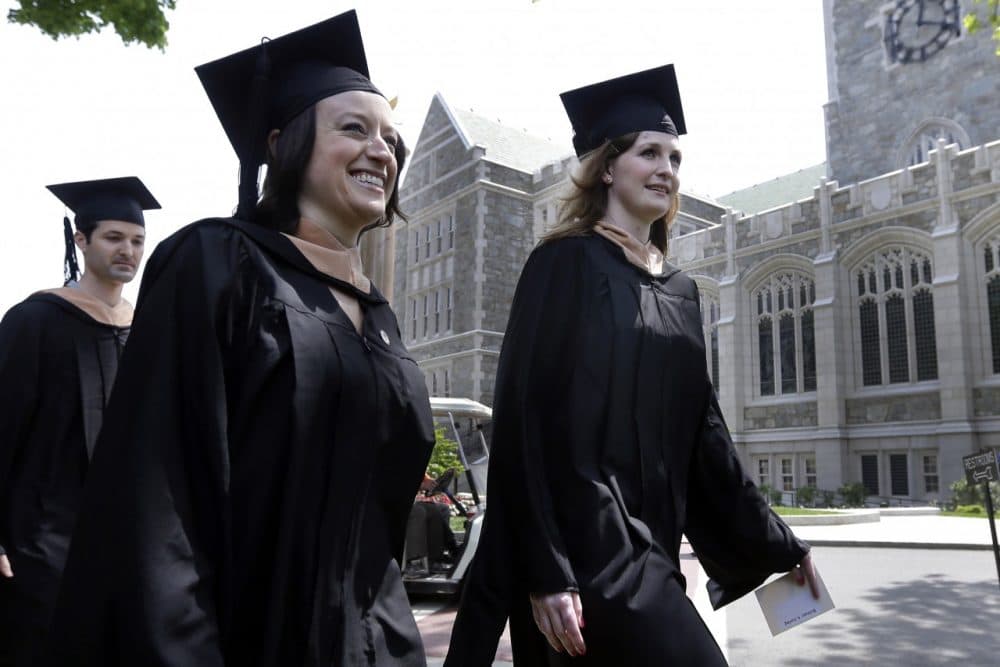Advertisement
The College Debt Crisis: How Do We Fix It?
Resume
The student debt crisis is a problem that's $1.3 trillion large, affecting some 40 million Americans. And, in the past 10 years, the debt has ballooned to equal more money than all auto loans in the country.
It's a big campaign platform in the presidential primaries as well. But how can we get beyond the campaign rhetoric and really fix the student debt crisis?
Guests
Steven DiSalvo, president of Saint Anselm College in Manchester, New Hampshire. He tweets @Dr_DiSalvo.
Sandy Baum, research professor for the Graduate School of Education and Human Development at George Washington University and a senior fellow at the Urban Institute.
More
The Boston Globe: How To Fix The College Debt Crisis
- "The issue of spiraling pricing — a 46 percent rise in average tuition from 2001 to 2012, according to the Federal Reserve Bank of New York — can only be addressed if college administrators are allowed to speak to our peer institutions about setting a reasonable gross price. But that would require an exemption from antitrust laws. The Department of Justice is opposed to such an idea, believing it constitutes collusion that would drive up prices. In fact, we want to bring prices down by lowering our discount rates to arrive at a more realistic cost structure."
The New York Times: With $350 Billion Plan, Hillary Clinton Prods Rivals On Student Debt
- "Mrs. Clinton's plan leans heavily on spending by the federal government, giving money to states that guarantee that students need not take out loans to cover the cost of tuition at four-year public colleges and universities. According to the plan, about a third of the overall cost would go toward reducing the interest rate on new or existing student loans — whether for public or private education — which currently bring the Department of Education billions of dollars in profits."
The Wall Street Journal: Grad-School Loan Binge Fans Debt Worries
- "The doubling of student debt since the recession, to $1.19 trillion, has stoked a national discussion over how to rein in college costs and debt and is becoming a major issue in the 2016 presidential race. Little noted in the outcry is the disproportionate role played by postgraduate borrowers, who now account for roughly 40% of all student debt but represent just 14% of students in higher education."
This segment aired on August 19, 2015.